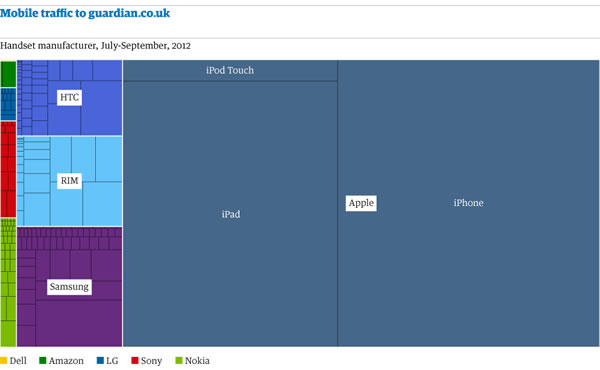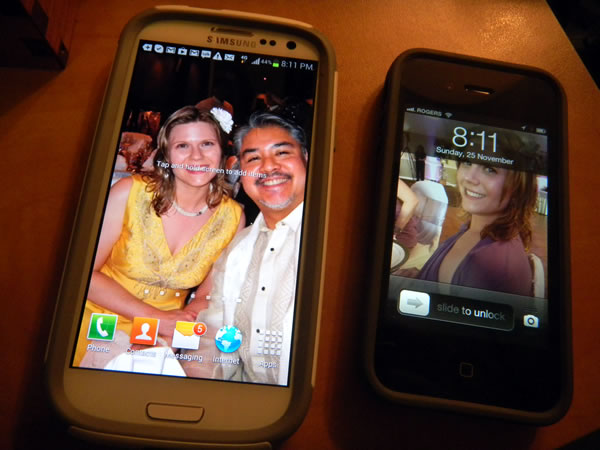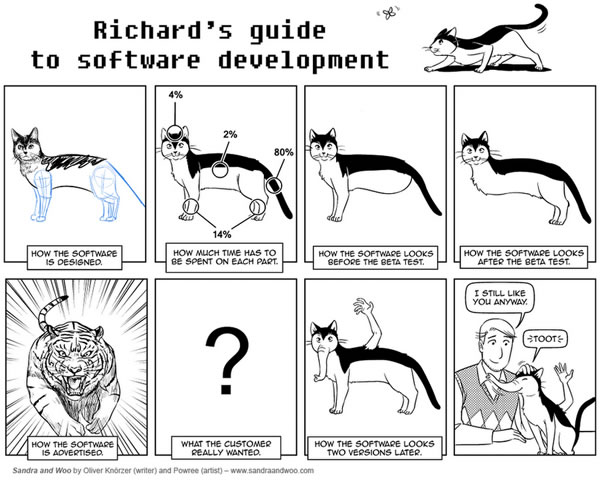
In response to last week’s article, in which I wrote about interviewing programmers for a position at my startup and giving them the FizzBuzz test, a number of people wrote in to tell me that knowing how to determine whether a given number is a multiple of another number — a task made easy with the modulus operator — was esoteric knowledge.
One such complaint came from none other than Rob Conery, who among other things is the guy behind the tutorial site Tekpub and co-creator of the excellent podcast This Developer’s Life, and doer of other interesting, geeky things. He wrote:
I would fail that test. I would fail it for a number of reasons – the first of which is what *you* perceive to be a “good programmer”. I don’t want to sound negative, but I would urge you to reconsider what you’re doing. You probably sent some very good talent out the door.
Here’s my point: these are *people*, not machines! I find the attitude of “let’s see how good you are at writing this arbitrary bit of gotcha code under the gun” soooooo very Enterprisey, where arbitrary metrics can somehow convey what the worker will do for you.
I can’t tell you the number of programmers I’ve hired “on a hunch” – that didn’t know the basics of what I needed them to do. But I could see the light in their eyes, I could *feel* their need to WIN – and you know what? They were the best damn employees I ever had.
You know who were the worst? The ultra-geek engineers that could kick out FizBuzz in minutes.
I wish this mentality would shift. I just hired a person here at Tekpub who I now couldn’t imagine doing business without. You know what he was doing when I hired him? REAL ESTATE APPRAISAL. Why did I hire him? Because he was smart and motivated. He picked up *everything* I needed him to know with 2 weeks – and he did it on his own because he *wanted it*.
Anyway – sorry Joey if I’m coming off negative. I have a soft spot for these kinds of posts that translate to “OMFG Look how DUMB these kids are!”.
/rant
Hey Rob, don’t worry about coming off negative! I have no trouble with people taking issue with my ideas in the comments, especially if it’s in the service of our craft. It’s also an honour to get a comment from one of my favourite podcasters.
Modulo Math
While I think that the modulo operator falls under “basic programming knowledge”, I don’t think it’s the crucial part of FizzBuzz. I think the decision-making part — knowing when to output “Fizz”, “Buzz”, “FizzBuzz” or the number — is far more crucial. Programming as we commonly do at present boils to down these:
- Giving instructions in a specific sequence
- Repeating actions in a loop
- Choosing among two or more possible actions based on one or more given conditions
I picked FizzBuzz as a test because it’s about as domain-unspecific as it gets. Maybe the “determine if a number is divisible by 3 or 5” part is too mathematical, but there’s no reason I can’t eliminate it.
Would the FizzBuzz test be more fair if I said “Assume that there’s a function called multiple_of_3 that accepts a number and returns true if and only if the number is a multiple of 3, and a function called multiple_of_5 that accepts a number and returns true if and only if the number is a multiple of 5?”
Pen and Paper
Some people wrote that doing FizzBuzz with pen and paper was unfair. Would you consider the FizzBuzz test to be more fair if I let candidates use a computer?
The Observer Effect
Other commenters wrote in and said that I may have passed up some good people because watching them like a hawk with a stopwatch as they wrote down their solution might have thrown them off their game.
Allow me to clarify: I did no such thing. I gave them a spot at my desk, sat down at another desk, pulled up my iPad and read. There was no stopwatch; just a quick look at the time every now and again, mindful of the fact that we had only an hour for the whole interview.
I tried to make it as non-intimidating as I could, and I was aware that even so, it must been at least a little intimidating. Call me a hard-ass if you must, but this is a startup, and we’re int he business of writing mobile software for enterprises. The field is one giant moving target, enterprises can be rather arbitrary and fickle customers, and we’ll be competing with established players with far more resources than we have. If you can’t take a reasonable amount of pressure (and hey, sometimes there’ll be an unreasonable amount), the programming jobs I have to offer aren’t for you.
Looking at Candidates’ Past Work
I asked candidates if they could show me samples of past work, especially work from their previous or current job. Some could, but others weren’t able to for various reasons. Some projects were company-internal websites that couldn’t accessed from outside. Some couldn’t be installed on their own computer for technological or legal reasons.
I also asked candidates to show me any side projects. If you have the time to have one, they’re a great way to demonstrate what you can do, and they’re completely under your control. However, not everyone has the time or inclination to have a side project.
One of the reasons I used FizzBuzz was to get around the problem of assessing their programming skill in the absence of being able to view a candidate’s past work.
Going with Your Gut
In his comment, Rob Conery pointed out something that I believe in: depending on your situation, the “ultra-geek engineers” might not be the best people for the job. He talked about a Tekpub hire whose last job wasn’t programming, but real estate appraisal. He went with his gut and simply hired someone who was a good fit, smart and hungry.
To that, my instinctive reply is: You know who also went with their guts? Every U.S. election pundit who predicted a Romney victory in spite of Nate Silver’s silly “math”.
But seriously: the guys I hired would’ve likely have been overlooked by Shopify, Unspace and a bunch of other hot-shot startups. Like Rob’s hires, they’re smart, hungry, and a good fit — and they also passed the FizzBuzz test.
Is it Fair to Even Have a Test?
The last two companies for which I worked — Microsoft, then Shopify — are quite different in many ways, but one thing they have in common is that they issue tests to people applying for development jobs. I thought I was being fair by issuing what I consider to be an incredibly basic test, but some people have written in to tell me that it’s wrong to have any test as part of the interview. What do you think?



 My friend
My friend 







